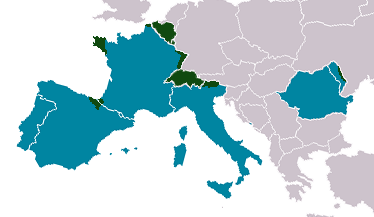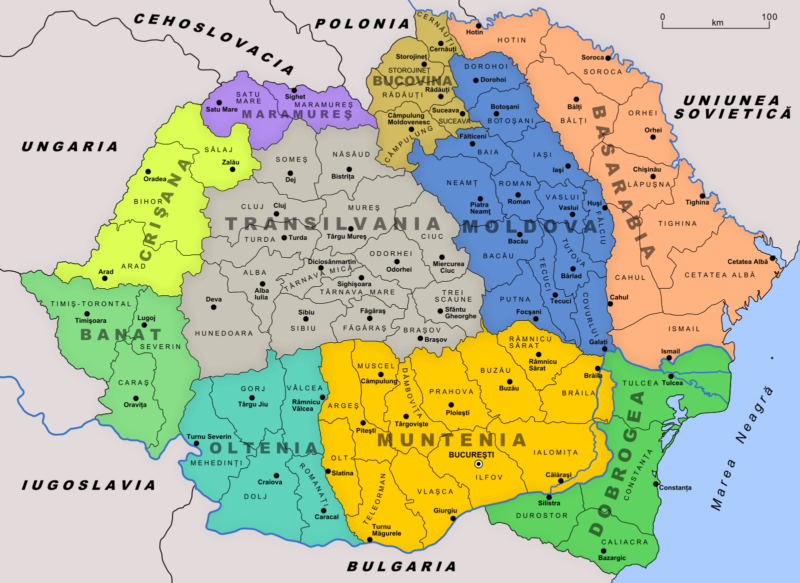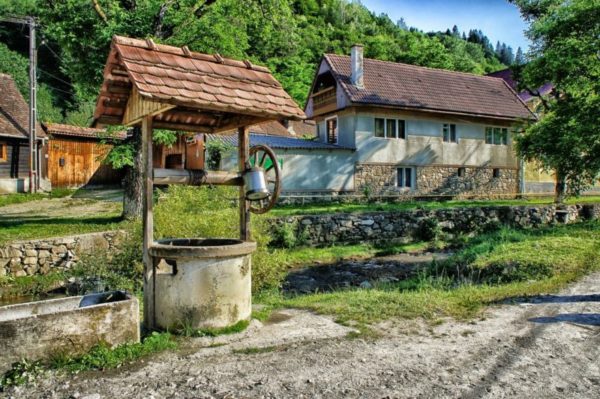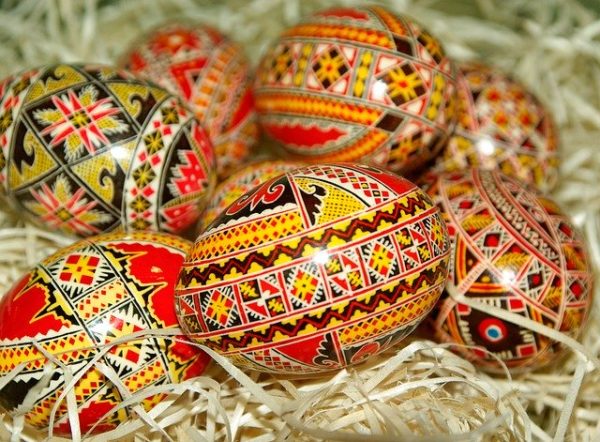Learn Everything About the Romanian Language
Romanian is a unique and fascinating language. It’s one of the most often overlooked languages in the world. Thanks to its rich and long history, the language they speak in Romania today is truly one-of-a-kind. Discover its current use, history, and basic facts about the Romanian language here.
Romanian Is a Romance Language
People often forget Romanian from the list of Romance languages. French, Spanish, Italian, and Portuguese are much more notable members of this family. But, Romanian is related to all of these. So, Romanian is like Luke from the Hemsworth family.
Despite literally having “Roman” in its name, Romanian isn’t an obvious Romance language. It’s separated from the others geographically by the Balkans. And thanks to its Slavic neighbors, it has a significant Slavic influence.
Daco-Romanian is the type of Romanian that we recognize today. It’s part of the Eastern Romance branch. Linguistically (and geographically), the closest Romance language to Romanian is Italian. The two languages have a 77% lexical similarity according to Ethnologue. That seems like a lot, but between major languages, it’s actually not that impressive.

An Overview of the Romanian Language
There are 24 million native Romanian speakers and roughly 4 million people with Romanian as a second language. Romanian is the official language of Romania and Moldova. In Romania, 93% of the population holds Romanian as their first language.
In Moldova, the official language is actually Moldovan. But, Moldovan and Romanian is the same language. The written form is the same. But, there is definitely a difference in accent between the two countries. Still, if someone says they speak Moldovan, they actually mean Romanian.
Romanian Dialects
According to Ethnologue, there are five distinct Romanian dialects. These are mutually intelligible, and they only reflect the accent of a region.
- Banat: of the Banat region.
- Bayash: this dialect is spoken by Gypsies.
- Moldavian: this Romanian dialect was especially influenced by Russian during the Soviet Union. The Cyrillic alphabet was used until 1989. This dialect is often called Moldovan.
- Muntenian: of the Wallachia region.
- Transylvanian: of the Transylvanian region.

History of the Romanian Language
Before the Roman conquered the land, the Dacian people lived in the area that’s Romania today. Once the Romans overtook the Dacians in 106 CE, they forced their language, Latin, on them.
Interestingly, the Dacians adopted Latin quite quickly. And even after the Romans left, the Latin language remained. From this Vulgar Latin, Proto-Romanian was born by the 9th century.
The Slavic Influence on Romanian
Thanks to its geography, Romanian was always surrounded by Slavic languages. Romanian is part of the Balkan Sprachbund. This is a collection of language in the Balkans that influenced each other. These include various Slavic language, Greek, and of course, Romanian.
The Slavic influence on Romanian is most obvious in modern Romanian pronunciation and vocabulary. But, some Slavic grammar also remained. Namely, Old Church Slavonic had the biggest influence on the culture and language of Romania. The administrative and religious life were both lead in Old Church Slavonic until the 16th century.
Unfortunately, there’s not a lot of written evidence of what Romanian looked like before the 16th century. Neacsu’s letter from 1521 is the first text of its kind. It’s written in Cyrillic script, which is further evidence of the Slavic influence on the Romanian language. In fact, the Cyrillic script was used as Romanian’s primary writing system until the 19th century.

Modern Period in the Romanian Language History
From the 19th century, Romanian linguists wanted to re-Latinize Romanian. The biggest step for this was the introduction of Latin letters. So, gradually, Romanians started to use the same letters that we know from the English alphabet. With some variations to account for the pronunciation, the Romanian alphabet is still very recognizable.
The re-Latinization movement also tried to leave non-Romance vocabulary behind. They drew vocabulary from Italian and French words. So, modern Romanian vocabulary includes a lot of influence from those two languages in particular.
After Romania gained independence in 1878, Romanian became its official language. Through the various border changes to Romania in the 20th century, the language remained intact.
What Is Romanian Like?
Today, Romanian is written fully in Latin script. Since it’s a Romance language, it bears a lot of similarities to Italian, French, and Spanish. But, there’s a hint of Slavic in Romanian too. Interestingly, in its grammar, Romanian retained a lot of original Vulgar Latin. So, Romanian is a unique sounding language, to say the least.

The Romanian Writing System and Alphabet
Until the 19th century, Romanian was written in Cyrillic script. Once the Latin letters were introduced, the change in Romanian writing was gradual. In Romania, this was a bit faster. It wasn’t until 1989 when the official writing system changed from the Cyrillic script in Moldova.
Language learners are always pleased to find that today the Romanian alphabet uses Latin letters. This makes learning Romanian a lot easier.
There are 31 letters in the Romanian alphabet. Any variations to the letters used in English are to reflect the difference in pronunciation.
| Latin alphabet for Romanian | |||||||||||||||
| A a | Ă ă | Ȃ ȃ | B b | C c | D d | E e | F f | G g | H h | I i | Ȋ ȋ | J j | K k | L l | M m |
| N n | O o | P p | Q q | R r | S s | Ş ş | T t | Ț ț | U u | V v | W w | X x | Y y | Z z | |
Romanian Pronunciation of the Alphabet
When you’re reading Romanian out loud, you have to be aware of the pronunciation rules. So, these are the most basic pronunciation guides to the Romanian alphabet:
-
- k, q, w, and y are rare, you’ll only find them in loanwords.
- ă = /ə/ pronounced like a in about.
- ȃ, ȋ = /ɨ/ this sound has no English equivalent.
- ş = sh in shiny.
- ț = ts in tsunami.
- ce, ci = ch in cheek.
- c = ch before i and e, but c = k elsewhere
- ge, gi = j in jacket.
- che, chi = k in keen.
- ghe, ghi = g in geese.
Romanian Vocabulary
The majority of Romanian words come from Latin or Romance origin. Some say up to 72% of Romanian words has a Latin root. And around 10-15% of Romanian vocabulary comes from Slavic. Both these figures come from examining the 2500 most common words in Romanian.

The fastest way to learn Romanian vocabulary is to focus on the most common words. Above all, learning the 2500 most often used words and phrases can already grant you enough vocabulary to be fluent. That’s what Romanian locals use, so your studies don’t need to exceed that. To start you off, here are some common Romanian words that every traveler needs to know:
Hello. |
Bună ziua. |
Good bye. |
La revedere. |
Please. |
Vă rog. |
Thank you. |
Mulțumesc. |
Excuse me. |
Scuză-mă. |
Yes. |
Da. |
No. |
Nu. |
Man. |
Om. |
Woman |
Femeie. |
Sentence Structure in Romanian
Romanian grammar is most similar to other Romance languages. So, just like French and Italian, Romanian is an SVO (subject-verb-object) language. That means that in simple sentences, the verb preceds an object like this.
- Maria ate an apple. – Maria a mâncat un măr.
But, Romanian is different from other Romance languages in a few grammar rules.
Romanian doesn’t have standalone prepositions or definite articles. Instead, Romanian uses declensions. Noun declensions aren’t common in other Romance languages, but Romanian retained this unique grammar rule. It’s worth noting that there is an indefinite article in Romanian, just like you can see in the example sentence below.
- I write a book. – Scriu o carte.
- I write the book. – Sriu cartea.
Romanian also uses declensions to conjugate verbs, but that’s not as unique.

Romanian Grammatical Cases and Noun Declensions
Noun declensions in Romanian mean that you need to conjugate a noun to fit the role in the sentence. So, if a noun is the subject of the sentence, it has a different ending than when it’s the object.
There are four grammatical cases in Romanian:
- Nominative: when the noun is the subject.
- Accusative: when the noun is the direct object.
- Dative: when the noun is the indirect object.
- Genitive: when the noun is possessive.
Mastering grammatical cases is very important to achieving Romanian fluency.
Does Romanian Have Genders?
Other Romance languages, such as French and Italian, all have two genders: masculine and feminine. These genders determine how a noun, adjective, article, and pronoun looks in a sentence.
But, Romanian has three genders instead of two: masculine, feminine, and neuter. So, Romanian learners need to pay special attention to this.
How to Count to 10 in Romanian
Romanian numbers aren’t difficult to master. But, if you’re interested in learning the numbers between 1 and 10 in Romanian, they look like this. Romanian’s Latin roots are undeniable.
1 |
2 |
3 |
4 |
5 |
6 |
7 |
8 |
9 |
10 |
unu |
doi |
trei |
patru |
cinci |
şase |
şapte |
opt |
nouă |
zece |
Is Romanian Hard to Learn?
No, Romanian is relatively easy to learn for native English speakers. That’s largely thanks to how close English and other Romance languages have been in history.
According to the US Foreign Service Institute, learning Romanian will take up to 600 hours. This means, that Romanian is one of the easiest languages to learn. Just like French or Italian learners, those studying Romanian will reach fluency fast.
Is it Worth Learning Romanian Language?
The short answer is: absolutely. There are countless reasons why you should learn Romanian. For example, you can enhance your career opportunities, study abroad, and improve your brain health by speaking Romanian fluently.
Romanian can also open the possibility of learning more Romance or Slavic language. Thanks to its unique history, the Romanian language is a perfect starting point for either (or both).
Learn Romanian With the Best Language App
Of course, you can learn Romanian on your own. But, it’s much easier to let a reliable language learning app handle the heavy lifting. And what better program to trust to bring you to Romanian fluency than OptiLingo?
OptiLingo gives you the most useful Romanian vocabulary. It includes a list of words and phrases that real Romanian locals use every day. So, you’ll never learn unnecessary things. In addition, you can practice your Romanian speaking skills from Day 1, and build your confidence in the language. Achieve your dream of speaking Romanian fluently by downloading OptiLingo!








